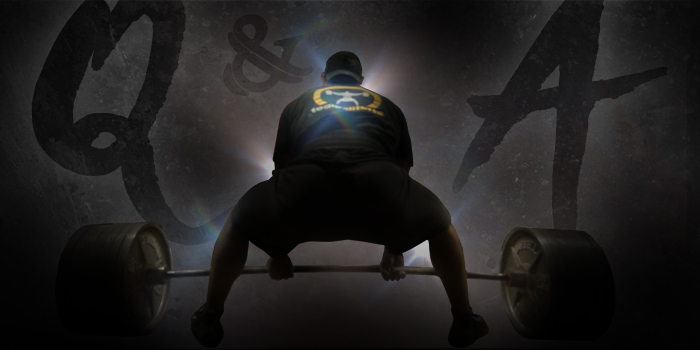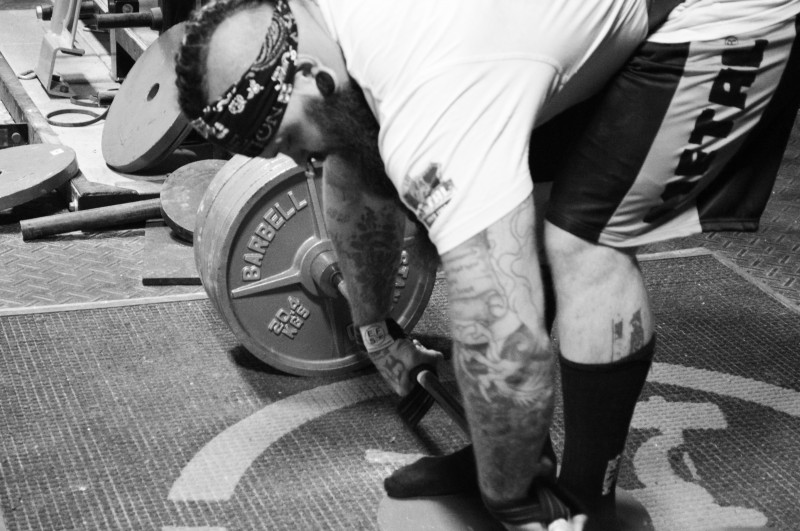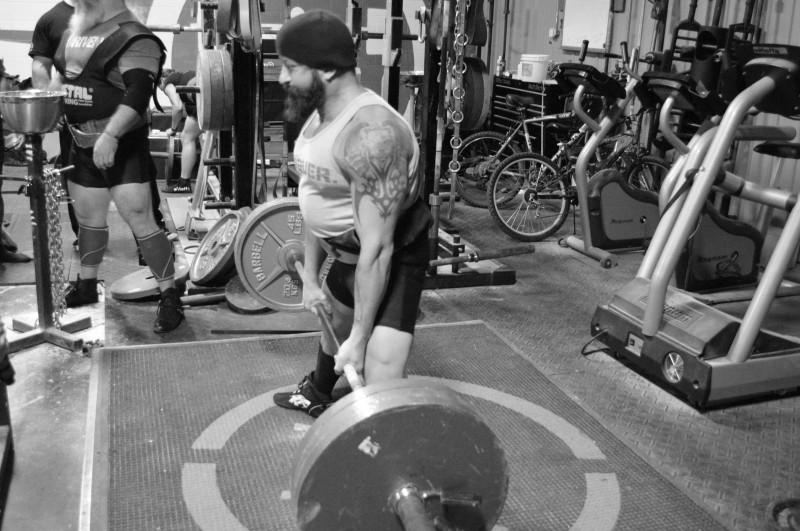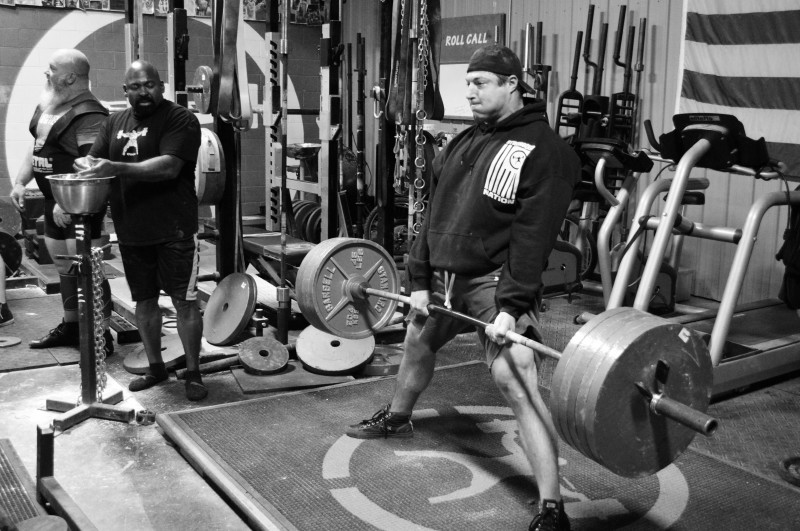
You have questions, team elitefts has answers. This article is a compilation of training questions asked by you, our readers, to the members of team elitefts. The topic today is deadlifting and includes answers from Brian Schwab, Méana Franco, Andy Deck, Brandon Smitley, and Matt Ladewski.
Warming Up for Block Pulls
Eric:
When do you add the blocks in a training session? Say I want to go for a 3RM. Should I pull from blocks for all warm-up sets, and sets leading to a 3RM? Or should I pull from the floor until a certain weight, add blocks, then start for a 3RM?
Brian Schwab:
Your technique will be slightly different depending on the height of the blocks, so I recommend you perform your warm-ups off of the height you'll be performing your working sets off of. I base all of my training off of a gradually increasing ROM. For deadlifts we pull off 4" blocks one week, 2" the next, then the floor on the third. We pull for triples for three weeks, doubles for three, then singles for three and have specific percentages for each height based off of a projected max.
I hope this helps to answer your question. If you'd like further details on my training method please feel free to ask more questions or you can check out my ebook designed to be the quintessential raw powerlifting training manual for beginners to advanced lifters looking to get stronger while incorporating the powerlifts.
Deadlifting with a Broken Finger
Rich:
I recently broke my ring finger and am looking for some alternatives that could keep my deadlift from falling too much while I'm healing for the next bunch of weeks. I can still somewhat grip, but I obviously can't clamp down.
I have access to a SS Yoke Bar, Cambered Squat Bar, leg press, power squat, reverse hyper, and pretty much everything but a Pit Shark.
Meana Franco:
Last year a dog bite left me unable to use my index and middle finger. There was a ton of swelling and I couldn't use my hand or deadlift for two weeks. I found that using straps to deadlift really increased the amount of swelling I had in my hand and I couldn't tolerate it for more than a few sets. This might be an issue for you if there's a lot of swelling in your hand. If you are able to use straps without pain, do it!
SS Yoke Bar good mornings are a great alternative. Also, reverse hypers, front squats, back extensions, and anything that works posterior chain will help keep you training in the meantime.
Andy Deck:
As my teammates have said, try straps first. Also, I have seen people use a long spud strap with a loop in each end as an assist when they have limited use of one hand or arm. The ends of the strap go on the ends of the bar (after plates are loaded on) and the strap goes over one shoulder (probably the side you have limited use of) and behind the other. This wouldn't be a good long term solution, but it might help you get by for a couple weeks if straps don't help enough.
Hip Mobility for the Deadlift
Anonymous:
Back when I was doing sub-500 pound weights I never seemed to have an issue with hip position. However, now my hips feel extremely tight at the bottom of the lift and they seem to rise before anything else does. This throws my shoulders into an awkward position kind of over the bar rather than behind it, and makes the top half of the lift much harder than it could be. Just wondering if anyone has any ideas on how to increase my hip flexibility or any other ideas on what could be causing these issues.
Brandon Smitley:
Are you pulling sumo or conventional? If you are pulling sumo, you might want to alternate weeks that you deadlift heavy or even rotate stances every now and then or prevent the wear and tear and the "tightness" you are describing.
In terms of mobility, I'd make sure that you're taking care of your adductors and hip flexors on a pretty frequent basis.
Brian Schwab:
For the first time in my lengthy powerlifting career I've started incorporating more mobility work. I'll be honest, if it's not easy to set up and not very time consuming then I'm not going to keep doing it. Following my treadmill warm-up and foam rolling I've been attaching an average band to a piece of equipment at knee height, looping it around my leg just below the knee, stepping away from where it's attached until there's a significant amount of tension, extending the opposite leg straight back, bending the banded knee at a 90 degree angle, and allowing the band to externally rotate my leg while I lean forward. I perform this this three times for around 30 to 45 seconds on each leg. I have to give credit to my training partner, Tyler Weaver, for finding it and having us do it. We're not sure what it's called but I just refer to it as "one leg band hip stretch" in my training log. I've been performing this every training day (five times a week) for just the last three weeks and it's already greatly improved my hip mobility on the deadlift.
Hip Shooting Up Too Quickly
Whitney:
Does anyone have any tips to keep the hips from shooting up too quickly during the deadlift? Once my hips shoot up my shoulders instantly round forward! It makes for one ugly deadlift!
Matt Ladewski:
There are a few things that I would work on.
First is strengthen your hamstrings. This will be the key to your deadlift. Right now your hamstrings are not strong enough to keep the hips in the right position, causing the hips to shoot up, putting the weight on your back. The low back and abs also need to be strong but I believe the hamstrings need twice the work that most feel is enough.
Another factor that is likely causing this problem is that you drop your hips down without creating tension in them. The deadlift, unlike the squat, does not load the hamstring because you are starting in the bottom position. So you must do that yourself. You must create tension from the bar first then from the leg. This will meet in the magical midpoint: the hamstrings right at the hip.
I would recommend you start with your head in the neutral position. Then IF you need to lift it later on you have it, but that is only if you need it.
Lastly, I teach my clients to take their breath standing and keep it while in the bottom position. This will allow a full breath and you must compress that pressure creating more tightness in the bottom position.
I think you are close and with some tweaks and focus on the hamstrings, this will improve quickly.
For more answers, or to ask your own questions to the experts of elitefts, visit the Q&A.












